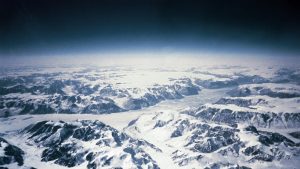
Using ice-cores and a new isotopic method that can provide more precise temperature information, Marie Curie Fellow, Takuro Kobashi, has gained an insight into Greenland’s climate history. His data suggests Greenland’s temperatures and global-sea-levels may increase faster than current climate projections.
It is not easy to reconstruct past temperature changes beyond the 150 year time frame of recorded observations, but EU Marie Curie Fellow, Takuro Kobashi at the University of Bern has developed a tool that can do just this. In a two year fellowship, completed in April 2016, Kobashi reconstructed the precise temperature of Greenland over the past millennia using ice cores. In a contrast to conventional methods, he collected data from argon and nitrogen isotopes trapped in air bubbles within ice cores.
‘It has been known that Greenland temperature co-varies with North Atlantic temperature so understanding Greenland’s temperature variability provides information on North Atlantic temperature and changes in ocean current change in the past.’ explains Kobashi. The last period of glacial retreat occurred 6 000 years ago and so being able to probe temperature changes at that time could provide useful for understanding the impact of current climate changes.
The ice core samples used in his work were collected more than 10 years ago during from the North Greenland Ice Core Project (NGRIP) which extracted 11 cm diameter ice cores stretching back to the last ice age. Kobashi’s new technique measures nitrogen and argon isotope ratios within trapped air bubbles, rather than measuring oxygen isotopes ratio’s which is the standard method.
The method takes advantage of the changes in air occurring in the snow layer that fell on top of Greenland’s ice-sheets, which are eventually trapped in the bubbles at the bottom of the snow layer before themselves freezing into ice. Gravity and the temperature gradient that exists within the snow layer causes a variable distribution of air. The isotope ratio of two types of gasses (nitrogen and argon) in the bubbles can therefore be used to estimate the past temperature gradient of the snow layer, and the thickness of the layer, allowing Kobashi to reconstruct the past surface temperature changes.
‘We have reconstructed temperature over the past 4 000 years and our preliminary analyses show the variations of Greenland temperatures significantly correlate with solar activity’ says Kobashi but adds the interpretation is not what might be expected. ‘When solar activity increases, Greenland’s temperatures actually get colder, and vice versa’. The phenomenon seems to be related to atmospheric and oceanic changes, and is also reproduced in some climate models. Temperature changes can also be explained by changes in volcanic activity, orbital changes and greenhouse gas levels in the atmosphere.
‘Whilst natural variability may mask anthropogenic influence on Greenland temperature, eventually Greenland temperature will start rising by anthropogenic influence,’ Kobashi says. Greenland generally follows global temperature rises, but Kobashi’s work shows the link between solar activity and temperature could help predict future temperature changes. Solar activity will be decreasing over the next decades and that means Greenland’s temperature may increase faster than projected by climate models that use only greenhouse gas increases in their projections. In turn, that could result in faster melting of the polar ice-sheet, and increasing global sea-levels.
Kobashi’s new method is an improvement on previous methods because it provides seasonally unbiased and more precise temperatures in a multidecadal time scale, as long as the ice core are from high snow fall areas such as Greenland, Antarctica, and possibly alpine glaciers. ‘As the method is now established, we will likely be able to have highly precise temperature records from these areas in coming decades, which could revolutionise our understanding of climate changes over the past millennia,’ concludes Kobashi.
Note: The above post is reprinted from materials provided by CORDIS.










